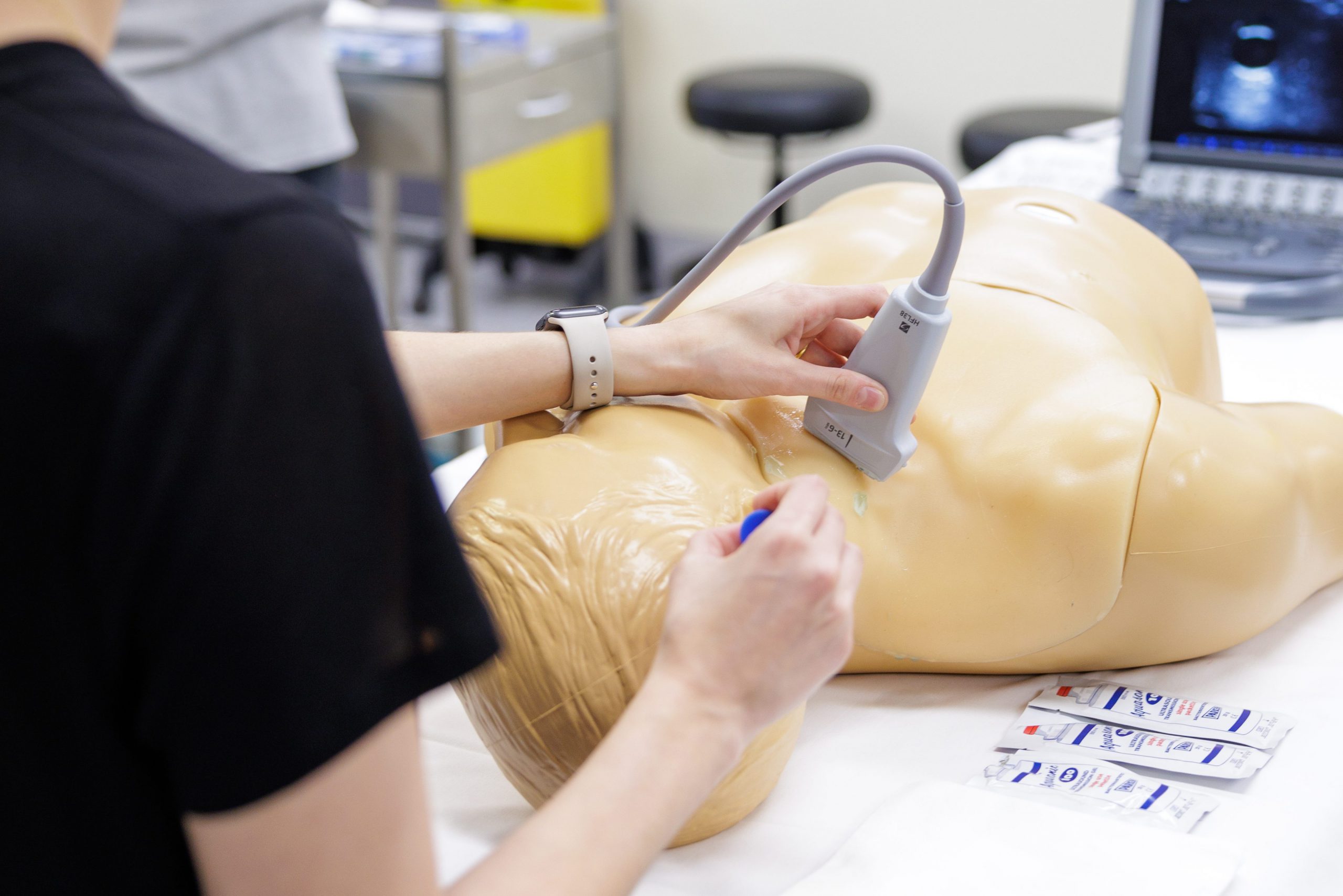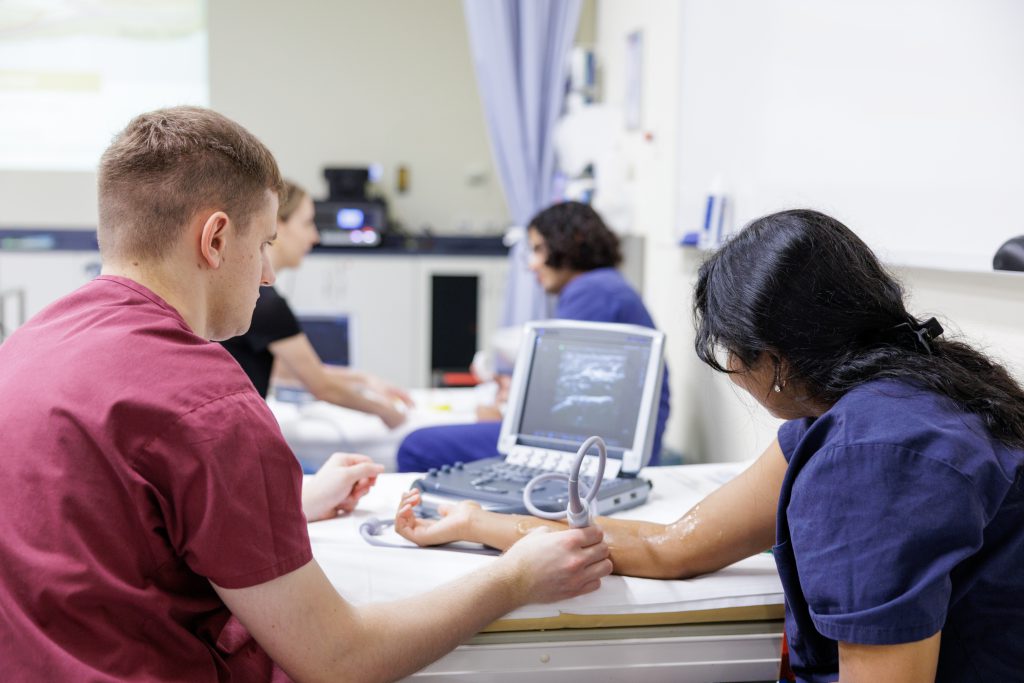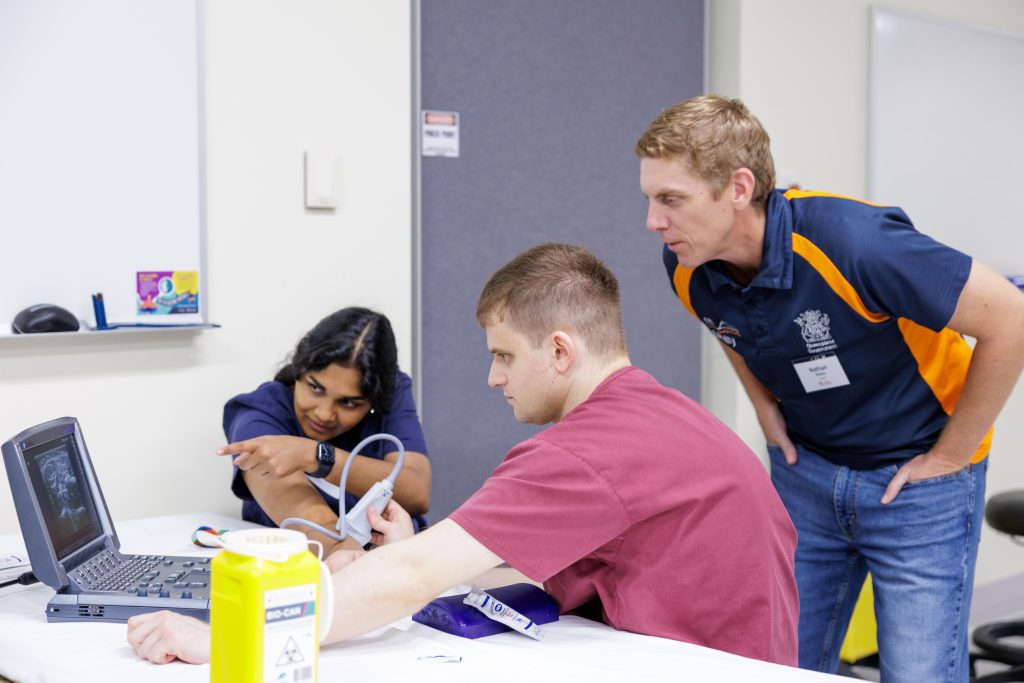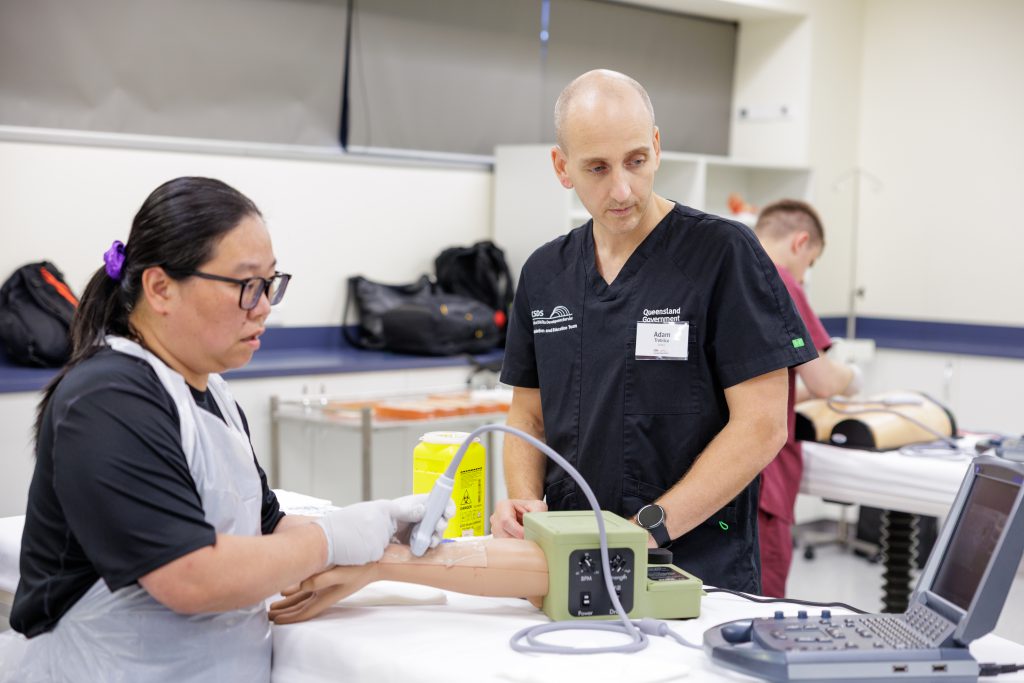
Central venous access devices (CVADs) and arterial catheters are essential tools in critical care. They allow clinicians to deliver life-saving medications, fluids, and blood products, as well as monitor haemodynamic status. In Australian public hospitals, around 14 000 central lines and 34 000 arterial catheters are inserted every year, procedures that are high-stakes, high-frequency, and directly linked to patient safety.
Why ultrasound matters
Traditionally, clinicians have relied on the landmark method for line insertion. However, this approach is now considered outdated and unsafe. Evidence shows that ultrasound guided central line insertion and arterial line ultrasound significantly reduce complications, improve first-attempt success, and lead to better patient outcomes.
Despite the evidence, many clinicians face barriers to training. Current opportunities are inconsistent, often dependent on workplace exposure or at the elbow instruction, leaving gaps in knowledge and confidence. With one in twenty CVADs failing prematurely in intensive care, the need for high-quality, structured education is clear.

Closing the training gap
To address this need, CSDS has developed the new Ultrasound Guided Central and Arterial Vascular Access (US-CAVA) course. This is the only course of its kind in Queensland that covers both central and arterial access in one structured program.
The course combines online learning with a face-to-face workshop, providing both the theoretical foundation and the practical skills needed to safely perform these procedures.

Who is the course for?
This course is designed for: junior doctors (PHO/SHO), early specialist trainees in critical care, extended scope nurses, rural generalist doctors, general practitioners with extended scope, and paramedics with extended scope.
It is particularly valuable for clinicians who have limited or no access to practical ultrasound training, feel low confidence with ultrasound-guided line insertion, or are seeking consistent, evidence-based guidance and support.
What participants will learn
The course provides foundational knowledge and practical experience in:
- Introduction to ultrasound and machine use
- Vascular device selection and decision-making
- Aseptic technique
- Internal jugular vein insertion techniques
- Femoral vein insertion techniques
- Femoral artery insertion techniques
- Radial artery insertion techniques
Participants complete the online component at their own pace before attending a hands-on workshop at CSDS. This blended approach ensures learners can consolidate their knowledge and build practical skills in a safe, simulated environment.

Ready to get started?
Registrations are now open, with limited places available due to high demand. If you miss out, or can’t find a time that suits you, please fill out our EOI form and the CSDS Courses team will be in touch.









